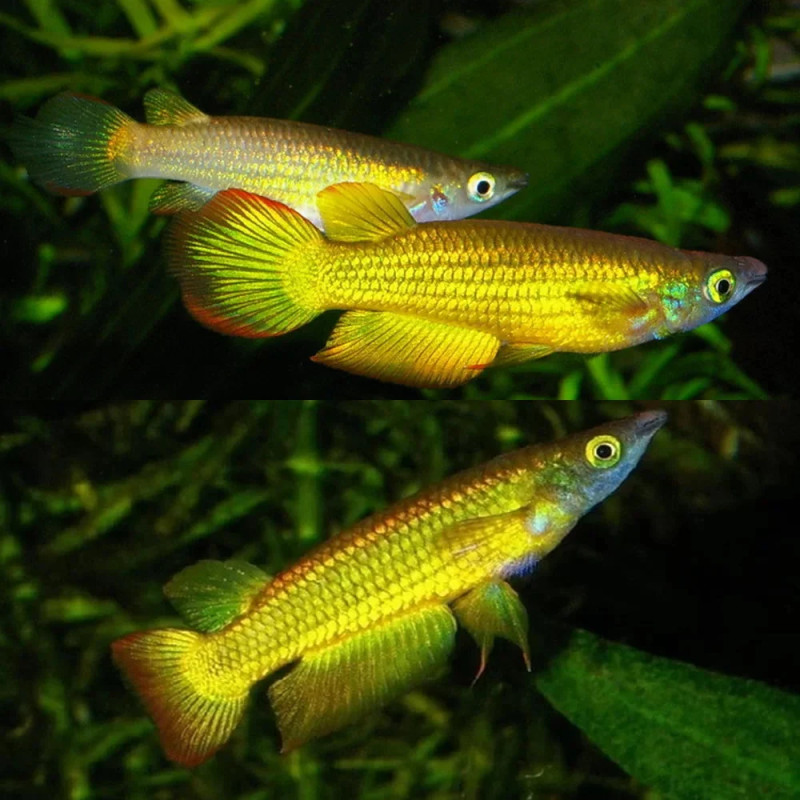More info
| Minimum Tank Size | 80 litres / 21.13 US gallons |
| Temperament | Peaceful |
| Care Description | Easy |
| Temperature | 22.2°C / 71.96°F - 23.9°C / 75.02°F |
| Carbonate Hardness | 3-8 |
| pH | 6.0-7.5 |
GENERAL DESCRIPTION
The Golden Wonder Killifish, scientifically known as Aplocheilus lineatus, is a captivating freshwater species originating from Africa. Captive-bred, these fish bring vibrant colors to aquariums, with males showcasing bright yellow to blue hues embellished with striking orange spots and stripes. Females, on the other hand, exhibit a more subdued appearance. Reaching up to 4 inches in size, these Killifish are ideal for community tanks.
AQUARIUM SETUP
The Golden Wonder Killifish thrives in a heavily planted aquarium with soft, slightly acidic water conditions (pH 6.0-7.5, KH 3-8). A minimum tank size of 80 litres is recommended to accommodate their active nature. Temperature should be maintained between 22.2-23.9°C. For more detailed information, refer to the table provided.
BEHAVIOUR
Known for their peaceful temperament, Golden Wonder Killifish are well-suited for community setups. They add both color and activity to the aquarium, making them a favorite amongst aquarists. These fish are adaptable to various water conditions, making them low-maintenance and easy to care for.
FEEDING AND DIET
As carnivores, Golden Wonder Killifish have a varied diet. They readily accept live foods like brine shrimp, white worms, and tubifex, as well as dry flakes and frozen foods. Offering a mix of these food types ensures their nutritional needs are met, promoting their overall health and vitality.
REPRODUCTION & DIMORPHISM
Golden Wonder Killifish are relatively easy to breed, with females laying their eggs in spawning mops or java moss. These fish are not annual species, and their eggs hatch within 12 to 14 days. Newly hatched fry can be transferred to a separate tank and fed live baby brine shrimp to foster their growth and development.
HABITAT AND DISTRIBUTION
In the wild, Golden Wonder Killifish are typically found in freshwater and brackish ponds, streams, and marshes across Africa. Their natural habitat influences their preference for planted aquariums and softer water with a slight acidity. These fish add a touch of the African aquatic world to home aquariums, captivating viewers with their beauty and behavior.




